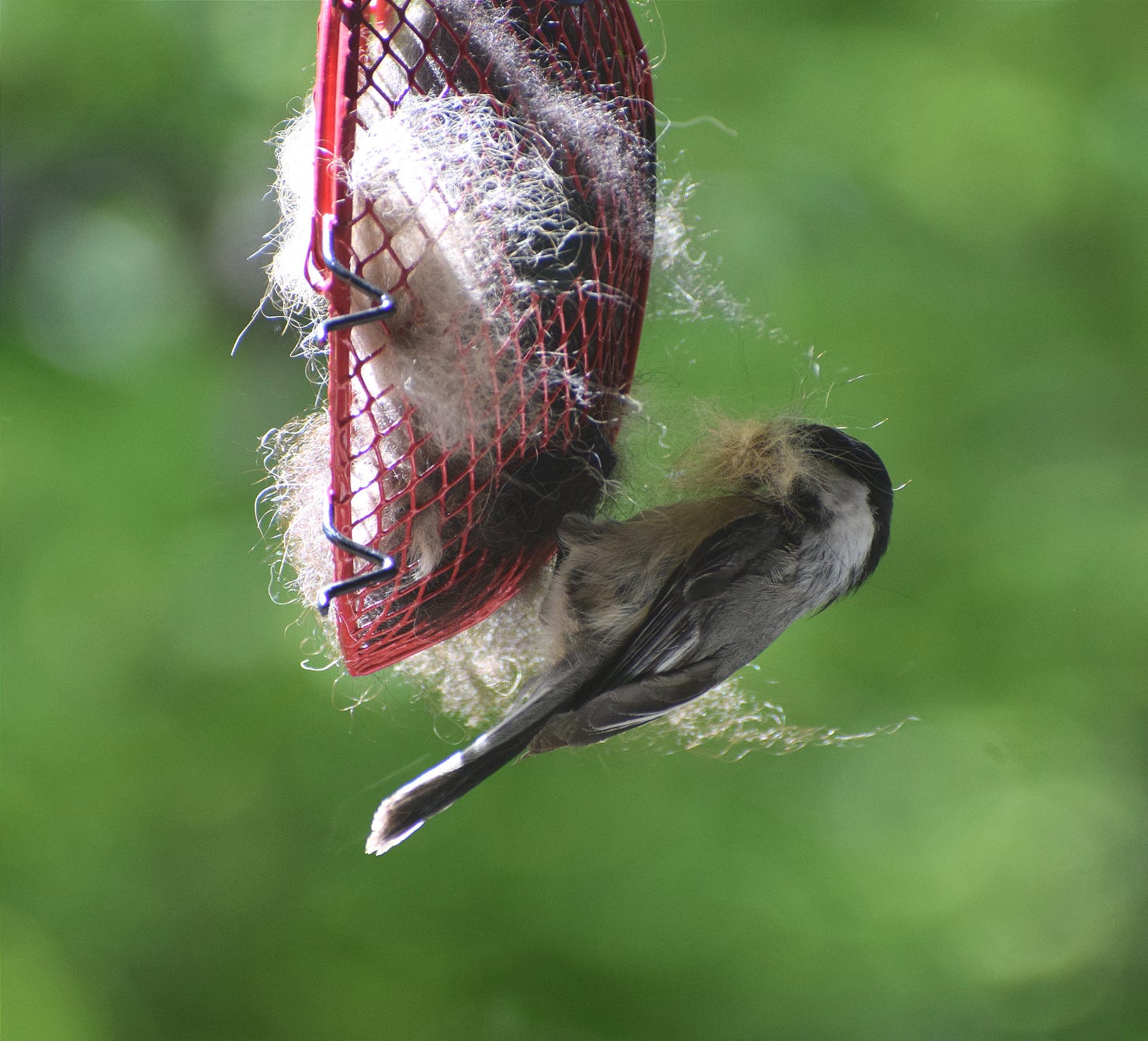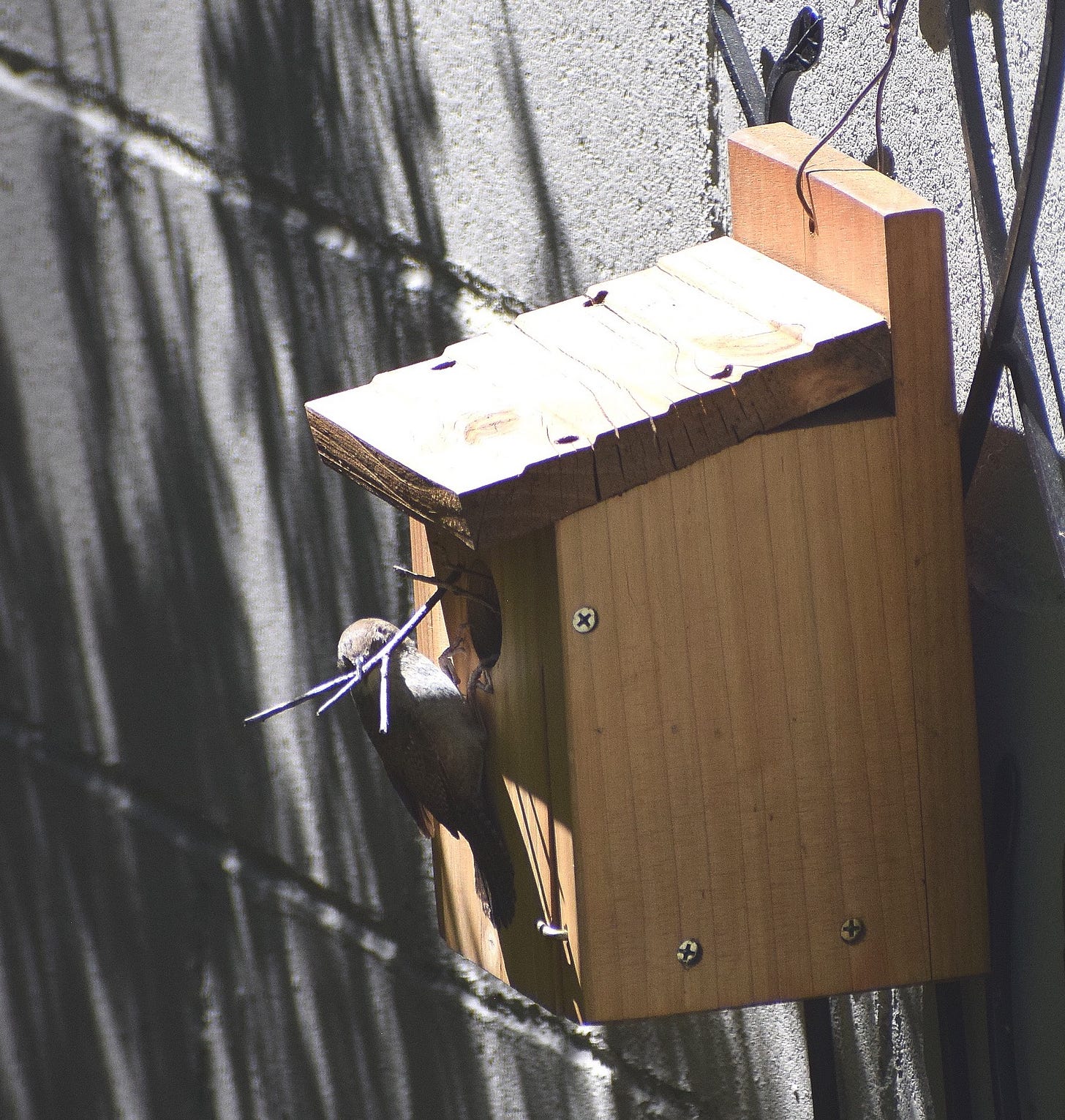A Black-capped Chickadee gathering pet fur for its nesting cavity.
Chickadee nesting behavior according to All About Birds:
Nest boxes, small natural cavities, or abandoned Downy Woodpecker cavities; often excavate their own cavities. In the case of next boxes, seem to prefer to excavate wood shavings or sawdust rather than to take an empty box. Nests can be at ground level to more than 20 m high, but are usually between 1.5 and 7 m high. They tend to excavate in dead snags or rotten branches, and often select alder or birch.
Both male and female chickadees excavate a cavity in a site usually selected by the female. Once the nest chamber is hollowed out (it averages 21 cm deep) the female builds the cup-shaped nest hidden within, using moss and other coarse material for the foundation and lining it with softer material such as rabbit fur.
A House Wren building its nest of sticks.
Wren nesting behavior according to All About Birds:
Northern House Wrens nest in old woodpecker holes, natural crevices, and nest boxes (or discarded tins, shoes, etc.) provided by humans. This bird’s association with open woodland is reflected in its choice of nest sites: it rarely uses nest sites more than 100 feet from woody vegetation, but also avoids heavily wooded nest sites where it’s hard to see predators coming. Despite their small size, they can be fierce competitors for nest sites, sometimes evicting a larger species and claiming its cavity after the bird has already begun nesting.
House Wrens pile twigs into the cavities they choose to nest in, either to make a bed on which to build a soft-lined cup, or sometimes mounded up into a barrier between nest and entrance, seemingly to protect the nest from cold weather, predators, or cowbirds. The cup itself is built into a depression in the twigs and lined with just a few grams (less than 0.25 oz) of feathers, grasses and other plant material, animal hair, spider egg sacs, string, snakeskin, and discarded plastic.








